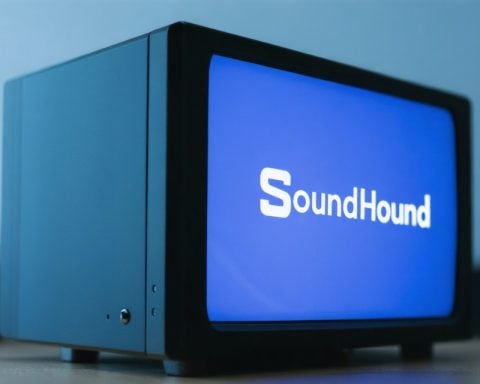Samsung has been exploring the development of a triple-fold smartphone for several years. However, despite their efforts, Huawei took the spotlight with the launch of the Huawei Mate XT in September. This has prompted Samsung to accelerate their plans.
A new report from the Korean publication ET News suggests Samsung is gearing up to debut its own triple-fold device next year. This groundbreaking phone is anticipated to feature a completely distinct design compared to Huawei’s model, boasting a massive screen that extends between 9 to 10 inches when fully unfolded.
The design is expected to be finalized by the end of November and will not incorporate the rollable screen concept previously teased by Samsung in September. Instead, the company is opting for an innovative inward-folding mechanism. This distinguishes it from the ‘Z’ fold style seen in the Huawei Mate XT, where the screen folds over itself.
Huawei’s Mate XT utilizes a dual-layer foldable screen, transforming one side into the main display when closed. In contrast, Samsung’s triple-fold phone will likely resemble the current Z Fold 6, as reported by ET News.
Samsung’s new folding technology aims to shield the hinge from external exposure, unlike the Mate XT. However, this different approach implies that one hinge might need to be bulkier to ensure durability, potentially leading to an imbalanced design.
Industry insiders reveal that Samsung prioritizes screen protection by opting for dual inward folds. When folded outward, the screen faces external elements, increasing the risk of damage upon impact or falls. Prototypes of this concept, seen at CES 2022, were named Flex S and Flex G, with the latter showcasing the inward-fold design expected in Samsung’s future device.
Will Samsung’s Upcoming Triple-Fold Smartphone Revolutionize the Tech Market?
Samsung has long been a leader in the smartphone industry, but with innovations such as Huawei’s Mate XT, the competition is stiffening. As Samsung prepares to launch its own triple-fold smartphone, this technological race offers more than just new gadgets. It might just redefine how we perceive and use mobile devices, impacting consumers’ daily lives and broader market trends.
Not Just Another Smartphone: This Could Change How We Work and Play
A smartphone that unfolds to a stunning 9 to 10 inches is more than a phone—it’s a hybrid device blending elements of phones, tablets, and even laptops. For professionals, this means more space for multitasking and apps, significantly enhancing productivity on the go. Imagine editing a presentation, tapping notes, and video calling colleagues, all seamlessly on a single expansive screen. For entertainment lovers, gaming and streaming will feel more immersive with the size of a small tablet.
Community and Cultural Shifts: More Than Meets The Eye
Mass adoption of triple-fold devices could lead to subtle shifts in how communities interact. Larger screens open up possibilities for richer media consumption and creation, empowering influencers and content creators in new ways. This can invigorate social media communities, leading to richer content and more interactive experiences.
What about educational use? Students might access customizable layouts during e-learning sessions, leveraging increased screen space for more dynamic and interactive learning experiences. In regions where technology access is a challenge, these foldable devices might offer a viable, multifunctional tool for varied needs.
Fascinating Facts and Emerging Controversies
The inward-fold design, distinct with its protective dual folds, offers some intriguing pros and cons. One potential advantage is the protection it provides to the screen from scratches and damage. However, could this result in a thicker, less sleek device? There’s an ongoing debate whether bulkier devices can maintain strong consumer appeal.
Furthermore, the decision to not use a rollable design carries its own set of controversies. Enthusiasts argue that rollable screens might exit the realm of speculation into consumer products, offering another futuristic option. Yet Samsung seems to prioritize reliability and durability over novelty, banking on inward folds.
Advantages vs. Disadvantages: A Closer Look
The advantages of Samsung’s triple-fold approach include enhanced screen protection, potential for greater multitasking capabilities, and a robust design less susceptible to daily wear and tear. Additionally, being a trusted brand, Samsung’s loyal customer base may choose its products based on the brand reputation.
However, the disadvantages could stem from the added bulk owing to complex hinge mechanics. This might challenge perceptions of sleekness expected in luxury tech. Possibly higher price points could also limit accessibility. Finally, ahead of its release, software adaptation for app developers remains uncertain.
Key Questions and Their Answers
Will price points deter consumers? This depends on Samsung’s market strategy. For tech enthusiasts and professionals, the device’s utility could justify a premium price. For the average consumer, flexibility in payment plans or trade-in options could be crucial.
How will this impact competitors such as Huawei or Apple? If successful, Samsung’s design could set a new standard, pushing competitors to innovate rapidly, potentially leading to a rapid evolution in smartphone tech.
As Samsung continues to push the boundaries of mobile phone technology, the broader implications for users and industries are profound. Enthusiasts eagerly await its release to assess whether it can redefine market norms and surpass competitors.
For more updates on Samsung and other tech developments, visit Samsung. For the latest on innovative smartphone designs, check Huawei.























